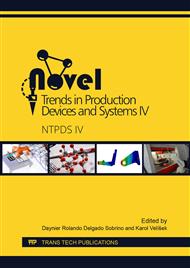p.3
p.10
p.18
p.25
p.34
p.43
p.52
p.59
Orbital Welding of Heterogeneous Joints
Abstract:
The paper summarizes the conclusions of the study prepared in cooperation with Janka engineering s.r.o. in production of pipe-tube joints. The parent materials (PM) were unalloyed steel P265GH and high-alloy steel X10CrNiTi 18-9. The GTAW method with filler material (FM) OK Autrod 309LSi was used. Welding parameters were optimized and their influence on the change of structure and mechanical properties of the weld joint was determined. The influence of diffusion transition zones with a marked increase of hardness was found. It was confirmed that when using low heat input, despite the formation of diffusion zones, the quality of welded joints is satisfactory.
Info:
Periodical:
Pages:
10-17
Citation:
Online since:
April 2018
Authors:
Price:
Сopyright:
© 2018 Trans Tech Publications Ltd. All Rights Reserved
Share:
Citation:


